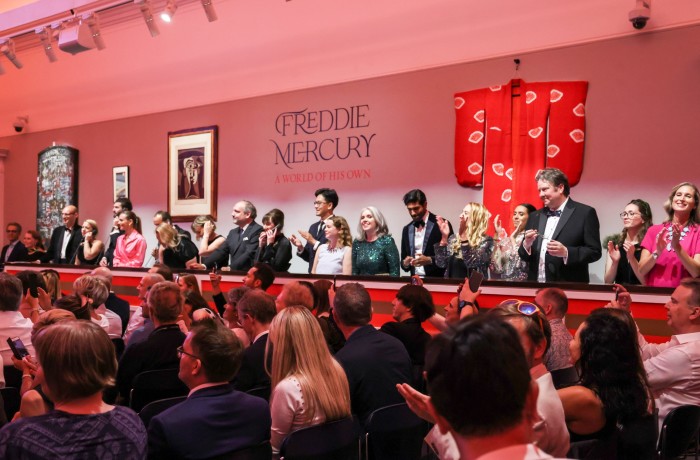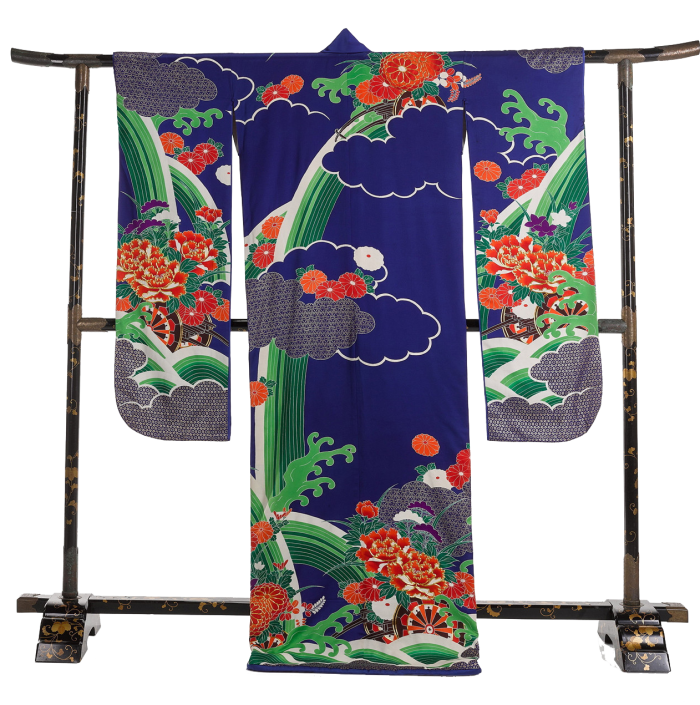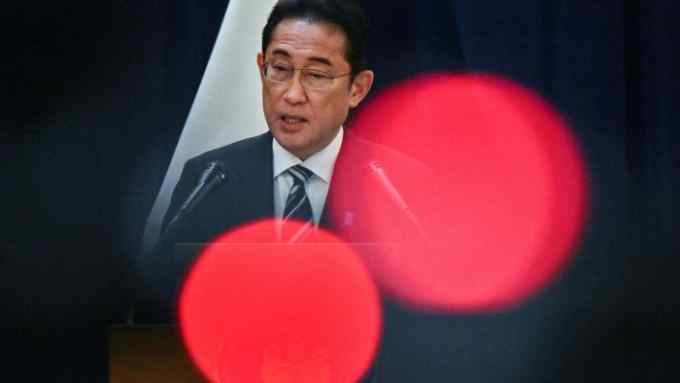Sun rises on resurgent Japanese art market

Roula Khalaf, Editor of the FT, selects her favourite stories in this weekly newsletter.
Last month’s £40mn auctions of the possessions of Freddie Mercury, late frontman of rock band Queen, revealed his fascination with Japanese art.
Among his collection was a prime work, coveted since a formative trip the British singer-songwriter made to Japan in 1975: a ukiyo-e, or woodcut print, by the Edo-period (1603-1868) master of the tradition Utagawa Hiroshige (1797-1858). Estimated to sell for up to £50,000, the piece went, to saleroom applause at Sotheby’s in London, for £292,100 (including fees).
Another auction, dedicated to 200 of Mercury’s Japanese prints, kimonos and other objects, made £2.6mn. Such demand, while benefiting from the Freddie factor, shone a light on Japanese art’s rise on the international market.
Mercury’s penchant for Japan chimes with a change in taste that specialists say has been taking shape over the past few years. “This market has gone in peaks and troughs but people are waking up to Japanese art again,” says Suzannah Yip, who founded the Japanese art department at Bonhams auction house in London in 2007. “It is cheaper and more intricate than its Asian counterparts so, in some ways, has been overlooked.”

She compares this mood swing with that of the 19th century, when Japan’s Meiji empire recognised the soft power of the nation’s art and promoted it heavily through international exhibitions. Notable fans at the time included the post-Impressionist painter Vincent van Gogh. The influence of Japanese art runs through the subsequent Art Nouveau and Art Deco movements in Europe.
Today, Yip says, the overseas market is back in force: “While Chinese art is mostly bought by the Chinese, Japanese art has a more diversified audience, including Americans, Middle Easterners and, of course, the Chinese too, as the cultures are so close.”
Oliver Moss, director of Asian art dealership Sydney L Moss, says the market for most Japanese works “took a blow” after Japan’s 1991 economic crash. Meanwhile, Chinese art has become pricey. “In the 1980s, you could get a really good collection of classical Chinese paintings for about £1mn to £2mn, now one Wu Bin [Ming Dynasty, 1368-1644] can cost at least £5mn.”
Some types of Japanese art have continued to sell well in the tougher times, notably ukiyo-e by Hiroshige and his predecessor Katsushika Hokusai (1760-1849). International demand has also stayed relatively strong for netsuke, miniature sculptures that were attached to traditional belts and popularised by Japanophile novelist Edmund de Waal in his The Hare with Amber Eyes (2010). Increasingly stringent rules around ivory have, however, “taken out about half this market”, Moss says.

Resurgent categories include arms and armour — particularly “sword furniture”, the functional and decorative fittings made for weapons. Calligraphy is “a wonderful area for investment”, Moss adds. “Zen-ga [Edo period ink paintings] are top-drawer, and still going for a song,” coming to market at under £10,000. Good quality ceramics, such as raku bowls made for tea ceremonies, can also be found at this level.
Fuelling demand is the growing emergence of Tokyo on the world art market and the success of some of its artists today. While Japan’s economy is hardly booming post-Covid, it is relatively stable and open to overseas investment after decades of tighter controls. Japan enjoys a marked influx of wealthy individuals, including from China, and global brands are taking note: witness the new luxury Bulgari hotel in Tokyo’s Midtown Yaesu complex.
Japan’s government is helping to stimulate its already-rich cultural sector. In July, a new art fair, Tokyo Gendai, became the first in Japan to secure bonded status, meaning that overseas exhibitors were the beneficiaries of customs and sales tax concessions on the value of their works.
Overseas galleries are responding. New York-headquartered Pace, one of the world’s biggest dealerships with outposts in London, Hong Kong, Los Angeles and Seoul, recently announced the opening of a branch in Tokyo’s new Azabudai Hills district.
“People keep saying that the international art world isn’t there, and I answer that’s exactly why we’re going,” says Pace chief Marc Glimcher. “Japan was one of the mother cultures of Modernism from the 1880s and the notion that Tokyo is off the beaten track is insane.” Glimcher’s represented artists include present day superstar Yoshimoto Nara and the teamLab art collective.
A wealth of Japanese-born contemporary artists are making their mark, including painter Chiho Aoshima and ceramicist Urara Tsuchiya. Dealers note the rise of animé in the film industry as helping to fix Japanese cultural style into the broader visual consciousness.
Japan has “an internationally-educated millennial generation looking to take the reins”, says Yip. In keeping with “consumer demand for high quality, sophisticated goods in all industries”, she adds: “Maybe this is its time for art.”

Comments